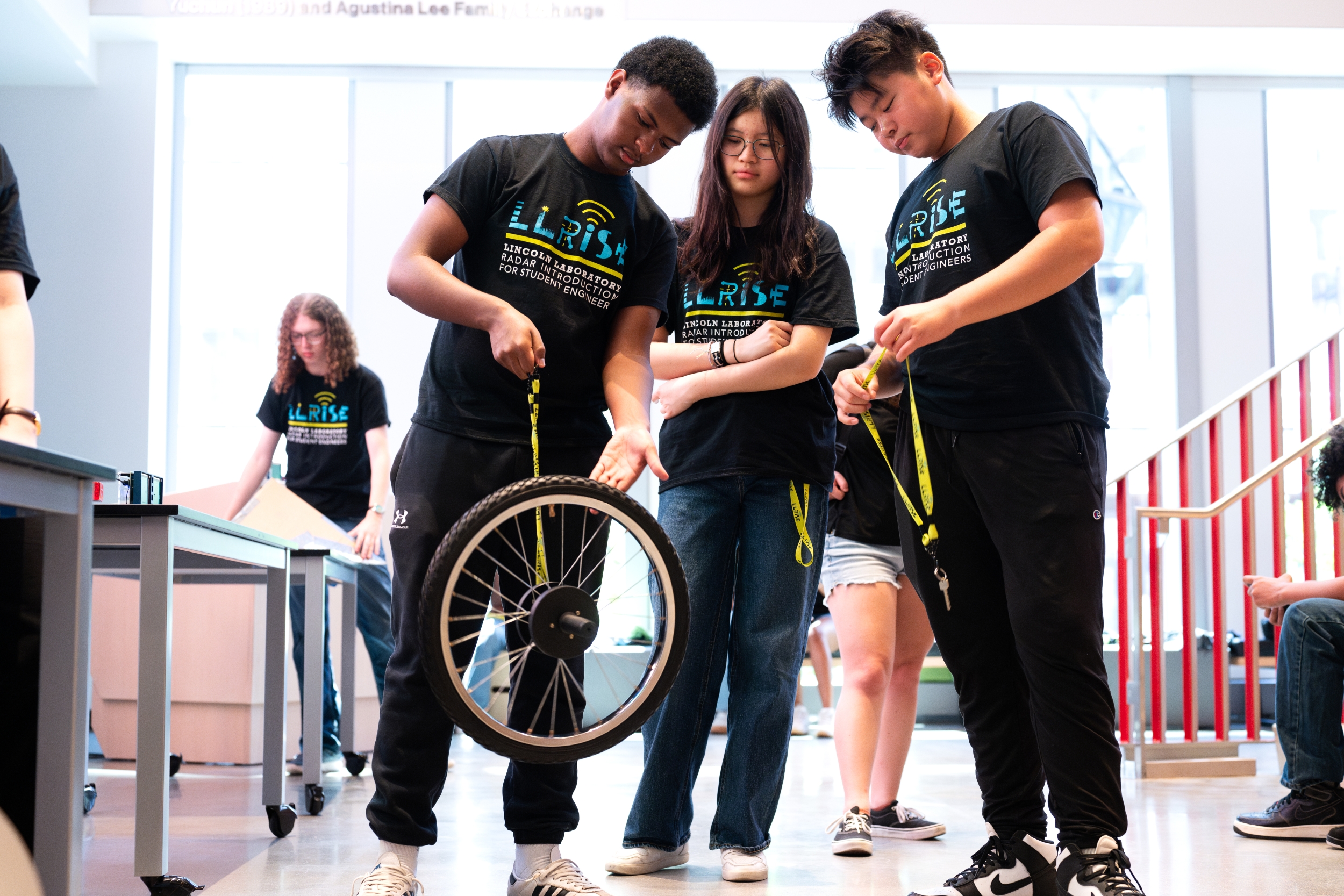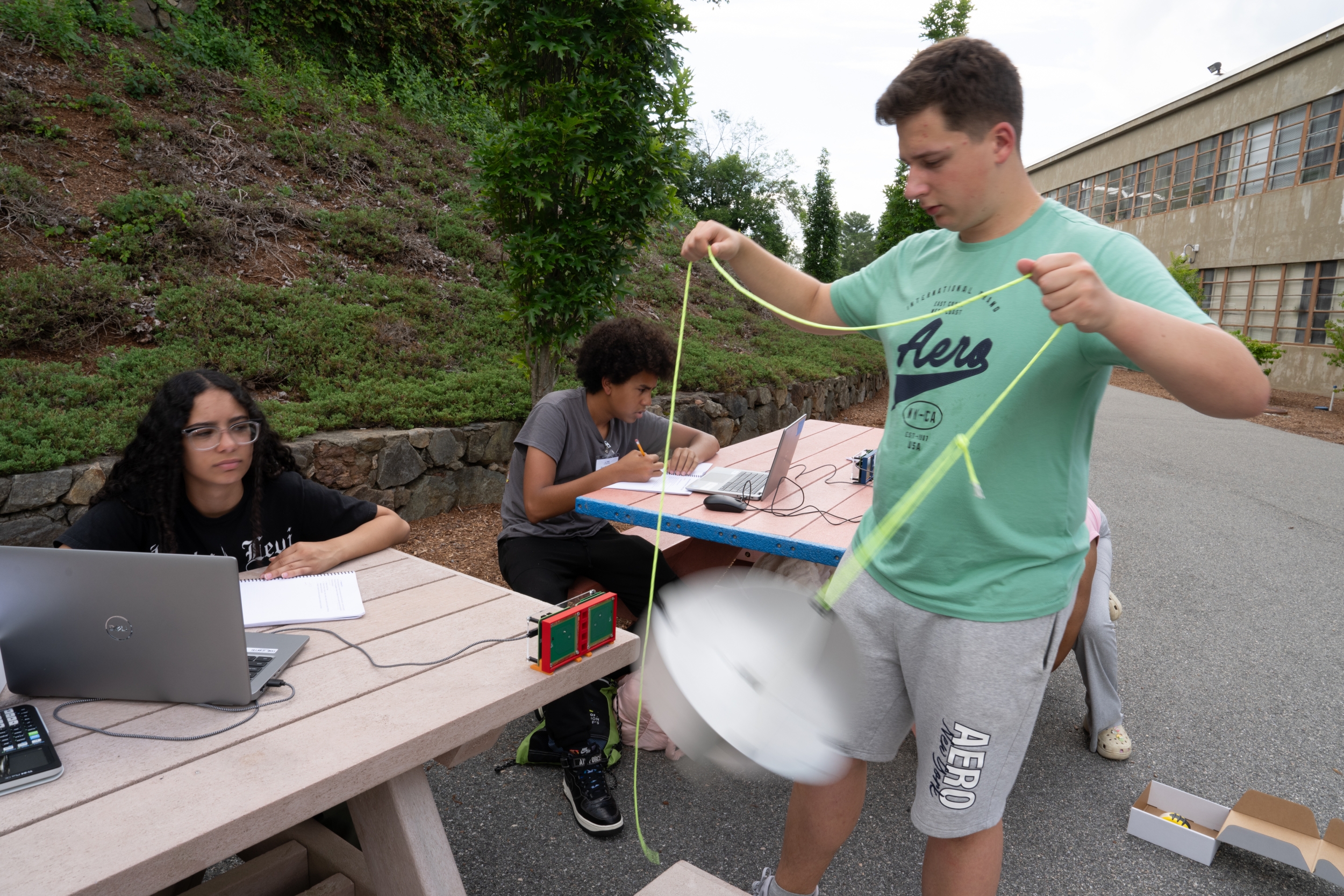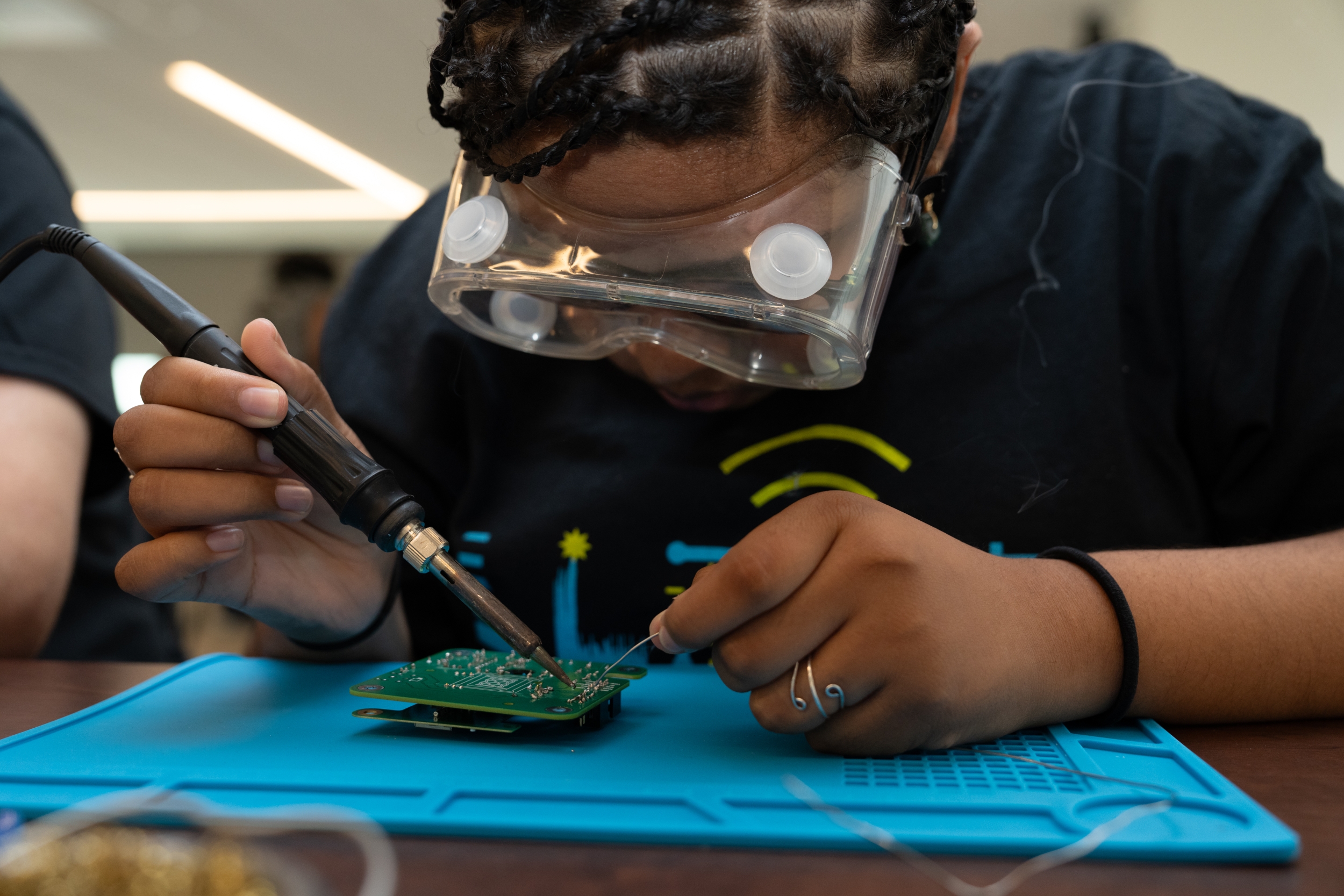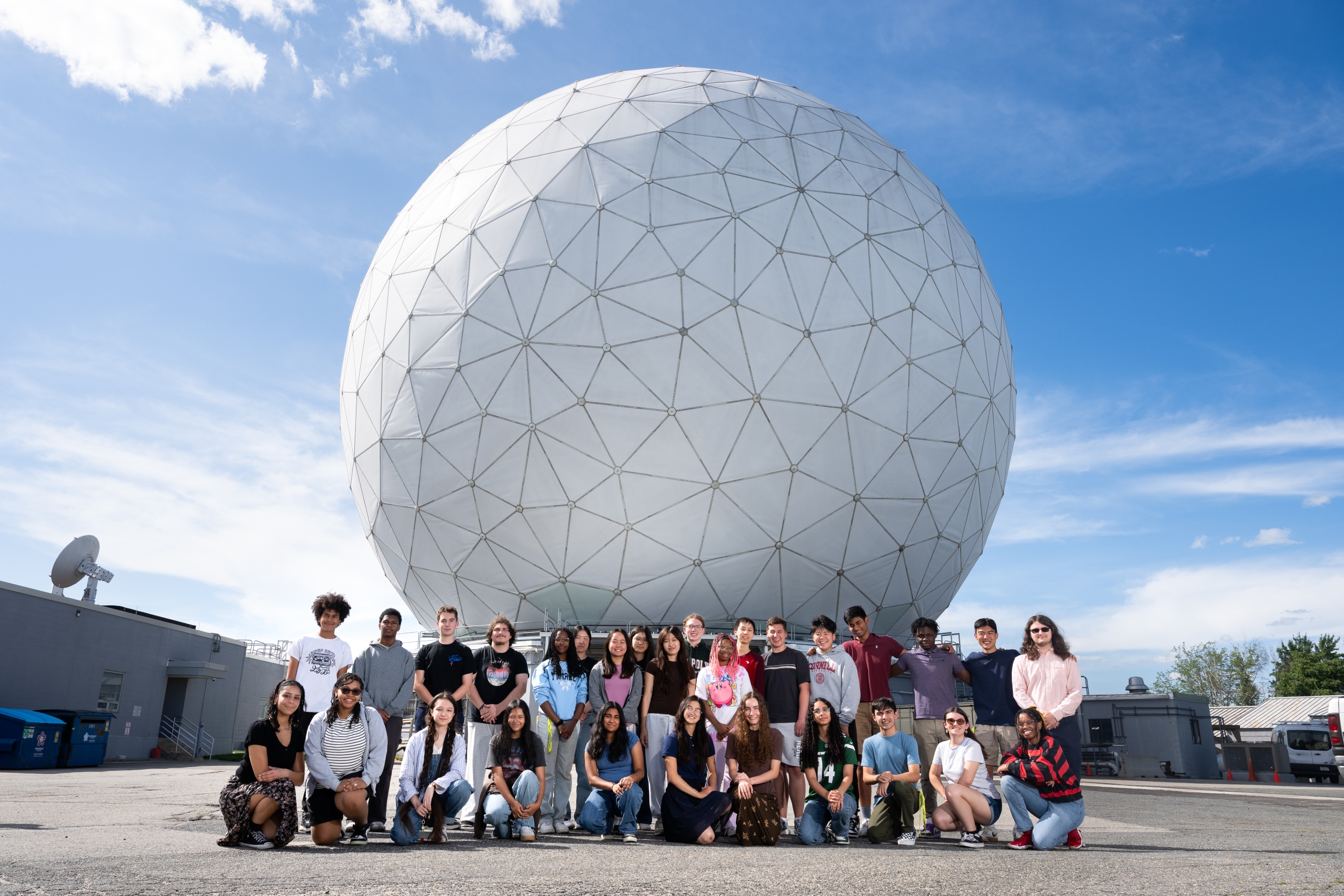2025 LLRISE class learns radar basics

In July, 26 high school students from across the country headed to the Laboratory for the Lincoln Laboratory Radar Introduction for Student Engineers (LLRISE). This annual two-week radar workshop, started in 2012, teaches students the fundamentals of radar technology through hands-on workshops and experiments. They also build their own radars, tour Laboratory facilities, complete group projects on different aspects of radar operations, and present these projects to the Laboratory community. At the end of the course, the students give radar demonstrations to visitors at the MIT Museum.

Maxim Myshchak, an aspiring electrical engineer from Leon M. Goldstein High School for the Sciences in Brooklyn, New York, applied to LLRISE for both its learning and social opportunities.
"More than providing an introduction to radar, LLRISE offers a tight-knit community of like-minded peers, a melting pot for team collaboration, and the beginning of lifelong friendships," he says. Myshchak is aiming for a career that incorporates 3D printing, electronics, and physics to create low-cost, open-source solutions to society’s challenges.

For Isabella Hogan, who attends Mother Seton Regional High School in Clark, New Jersey, collaborating with her classmates was the highlight of the course.
"LLRISE reinforced the idea that collaboration and communication are key in engineering," she says. "If I am struggling to understand a problem or am confused in general, I can always ask my peers and teachers for help." Hogan plans to pursue a degree in aerospace engineering and a career in aircraft design.
